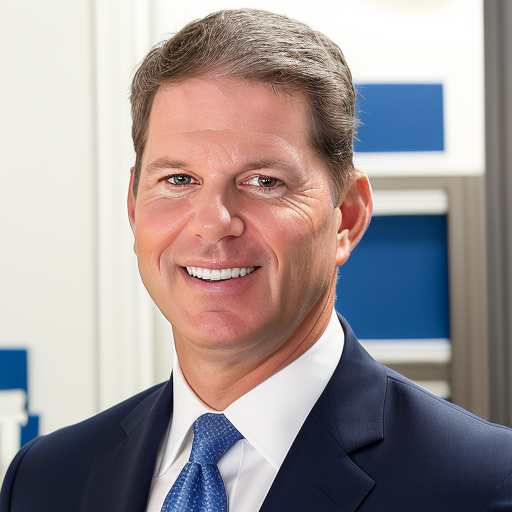
The last time we saw any meaningful advance in the development of biomaterial technology used in orthopedic implants, particularly in spinal implantation, was before Bill Clinton’s presidency. Since the 1990s, this field has remained relatively stagnant, with titanium and PEEK (polyetheretherketone) being the basis for virtually all spinal implants. However, both of these biomaterials have important limitations.
Engineering historically has focused on the biomechanical aspects of spinal implants, such as their strength under compression. The implants also need to be biocompatible. Biomaterials are technically foreign bodies, but the body needs to “accept” the implant for it to have a successful outcome. Despite that need, only recently have physicians, researchers, and engineers seen the need to somehow include the patients’ immune response as a critical component of implantation success. The relatively new field, osteoimmunology, acknowledges how the immune response affects overall healing as well as new bone growth after spinal implant surgery. The challenge is creating biomaterials that actually foster that response.
The need for new biomaterials
Since the 1990s, the number of lumbar spinal fusion procedures has increased by about 220%. Further, spinal fusion is the most common spinal procedure performed in the U.S., with more than 400,000 interbody fusions performed annually. By extension, more surgeries also mean an increase in revision surgeries, which, conservatively speaking, happens in 19% of cases. More revision surgeries are being performed on older patients; concomitantly, they also receive bone-growth-stimulating additives more frequently. Up to a fourth of those surgeries use additives such as bone morphogenetic protein (BMP), which can increase the cost of surgery by upwards of $4,600 and can cause its own set of complications.
In an attempt to improve spinal fusion outcomes and reduce the body’s immune response to the implants, many iterations of titanium and PEEK emerged. Titanium is strong, so strong, in fact, that it is far more rigid than bone. It can also give off ions as it erodes, causing tissue toxicity, implant shift or subsidence. PEEK mimics the bone’s modulus but is bioinert and hydrophobic, which sidelines key steps needed for attracting proteins and bone cell precursors (osteoblasts) to the site. This inertness–in that it doesn’t elicit a response from the host–contributes to the body walling off the implant. The fibrous encapsulation prevents bone from growing in and around the implant, so the implant can’t stabilize. Both titanium and PEEK often elicit a pro-inflammatory phenotype among cells of the innate immune system.
As the importance of patient immune response to implants became more evident, neurosurgeons and orthopedic surgeons began to seek out an alternate technology that would both support heavy load bearing and promote healing in spinal fusion patients. In addition to the implant material’s stiffness, strength, and surface characteristics, the technology would need to help promote a healthy tissue repair response.
Understanding immune response
Previous implants’ additions of bone-growth enhancers (such as BMP) didn’t affect the body’s immune response. That’s important because certain white cells called macrophages are critical in fostering healing and new bone growth. Macrophages are like traffic cops directing the right types of signals and proteins to come to the implant at the right time. In particular, a shift needs to happen between days four and five to switch the signaling from an initial pro-inflammatory response to a pro-regenerative, healing response. Additives like BMP do not foster that shift. Pushing bone growth without immune-related signaling may delay or limit the body’s ability to produce a strong, stable, or complete graft.
This is a particular problem during the first 12 months postoperatively. As long as the fusion is incomplete, the patient is vulnerable to a variety of complications. Macrophages can shift back and forth between two forms (called phenotypes). The pro-inflammatory version is referred to as M1, and the pro-reparative version is referred to as M2. The more robust and prolonged the M1 pro-inflammatory response is, the more fibrous tissue and dense scar tissue will accumulate at the site. Conversely, an optimal, rapid transition to the M2 phenotype can minimize fibrosis and facilitate the formation of new bone tissue over time, leading to effective healing. Fortunately, the application of these critical immunological concepts to novel implant design in the spine has produced biomaterials that support healing and recovery. Accordingly, the effects of immunomodulating implants are ushering in a paradigm shift in orthopedics.
A new era of biomaterials
As neurosurgeons and orthopedic surgeons widely accept the role of immune response in bone healing and growth—and apply new biomaterial technology in spinal implantation procedures—patients will experience more efficient healing and decreased recovery times. As more successful bone development is achieved with a naturally activated remodeling response, outcomes should be felt by patients in terms of less pain, greater mobility, greater quality of life, and fewer follow-up visits or additional surgeries. Load-bearing spinal fusion biomaterials that can proactively modulate the immune system are ushering in the next era of innovation in spinal implantation.
About Derrick Johns
Derrick Johns is CEO of DiFusion Technologies, a company dedicated to commercializing a suite of patented immunomodulatory, tissue regenerating, and antimicrobial polymers in the surgical implant space. The company’s new advanced biomaterial, ZFUZE™, the first true innovation in biomaterials for spinal implants in more than 20 years, is trusted by physicians across more than two dozen clinical institutions.

